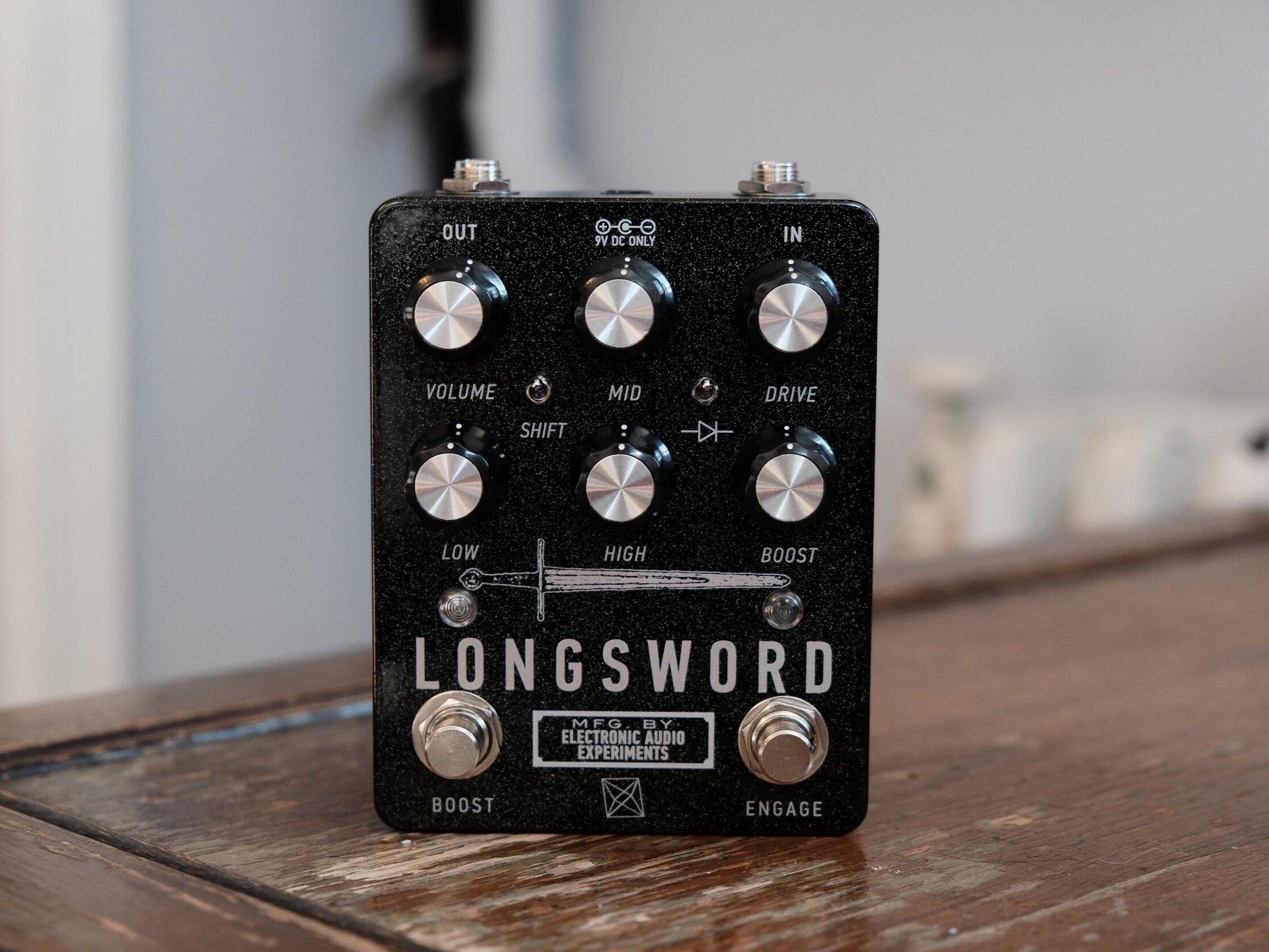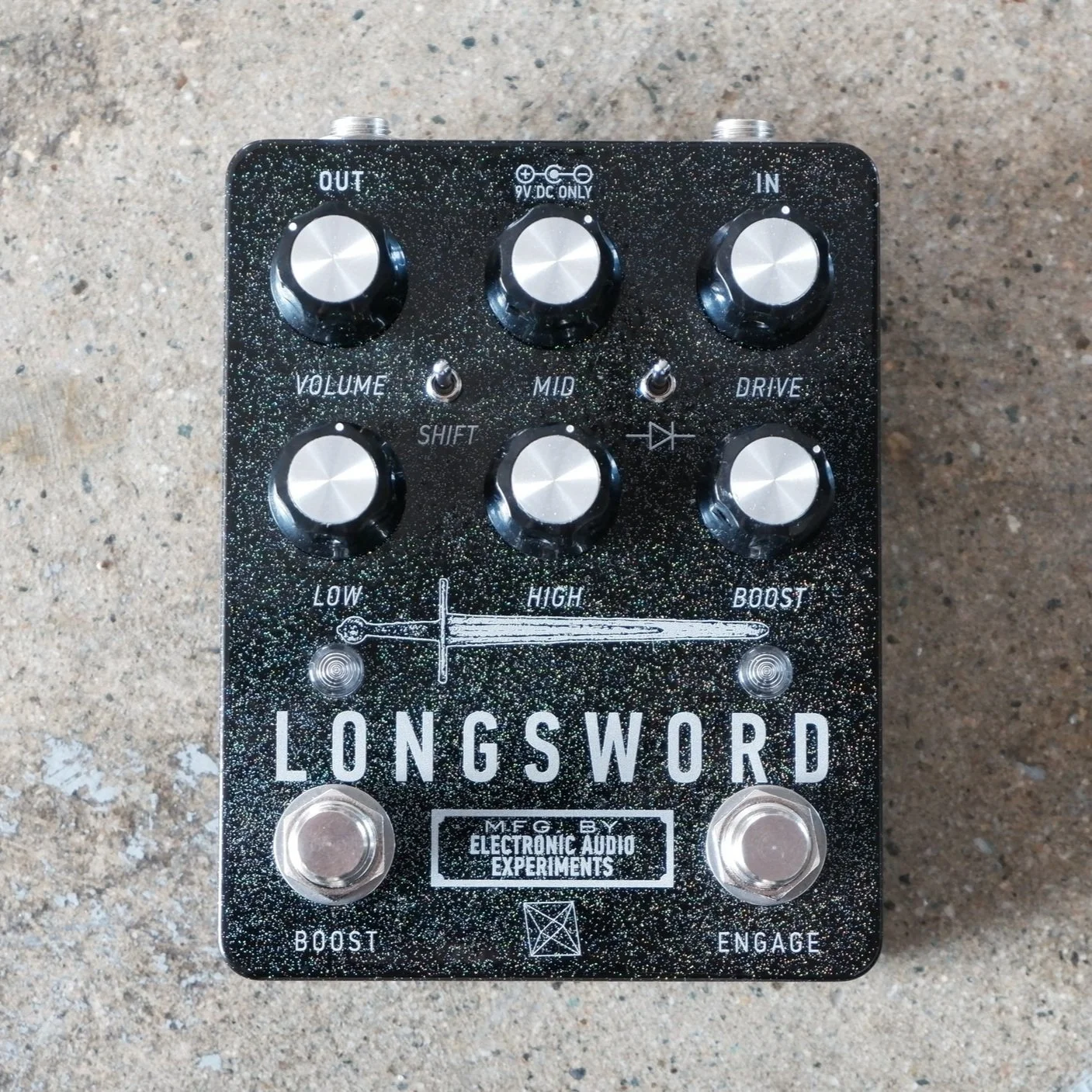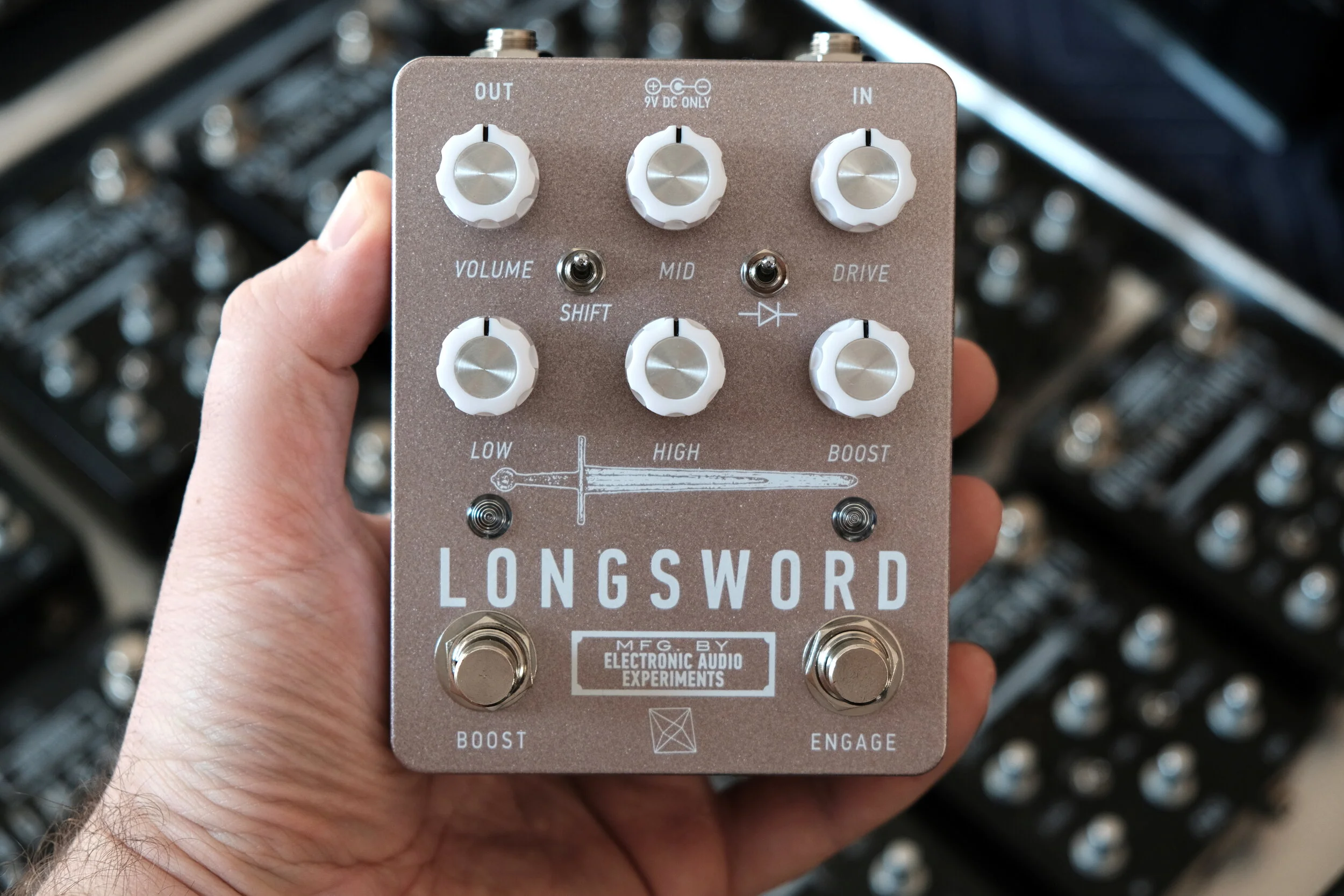Longsword
Longsword
The Electronic Audio Experiments Longsword is yet another contender in the endless void of op-amp based drive pedals—familiar but with some novel twists. Cascaded gain stages allow for the full range from clean boost to massive distortion, all without sacrificing tonal flexibility. The equalizer combines bass and treble shelving filters with an active, frequency-selectable midrange boost/cut control. This lets the user sculpt a diverse array of tones and carve out a niche in even the most dense of mixes. The Longsword has a broad frequency response which makes it work equally well with guitar, baritone, and bass.
Electrical Specifications
Bypass: Relay switching with true bypass
Input impedance @ 1 Khz: 500kΩ
Output impedance @ 1 Khz: 1kΩ
Power: 9V DC, 2.1 mm center negative barrel. The current draw is 75 mA.
We recommend a regulated, isolated power supply rated for 100 mA minimum. The PSU input is protected against reverse polarity and over-voltage up to 24V. Our pedals do not accept batteries.
Sound Clips
Controls
Level: output volume
Drive: go from light grit to heavy overdrive
Low/High: James/Baxandall tone stack (shelving filters)
Mid: active midrange boost/cut
Shift: selects frequency controlled by Mid pot
Diode: selects between clipping diodes, to alter dynamics and headroom
Up: MOSFET clipping, medium compression
Center: no diodes, minimal compression
Down: Silicon diode clipping, maximum compression
Boost (Footswitch): engages a front end mid boost
Boost (Knob): adds up to 20dB of gain when the Boost is engaged
Changelog
V4.5 (current as of January 2021)
- New mechanical format (changed enclosure shape, knob spacing, jacks, etc)
- Added power supply over-voltage shutdown circuit and ESD protection
- Increased Low/High control crossover frequency by approximately 500Hz to reduce interactivity of High and Mid controlsV4
- New 6-knob layout
- Surface mount PCB
- Boost knob moved to exterior
- Soft-touch relay bypass switchingV3
- Added 9V to 18V (+/-9V bipolar) power supply for increased headroom
- Gain 1/2 setting replaced with Boost modeV2.1
- Eliminated Range toggle, fixed at optimal intermediate settingV2
- Added diode clipping switch
- Added “Gain 1/2” switch to access 2nd preset, accessible via internal trimpotV1
- Initial release
Finish Variants
Standard: black sparkle with white print
Acid Etch: hand-finished using hydrochloric acid with a toner transfer mask. Application and technique vary between batches and individual units.
Rose Gold: rose gold powder coat with white print and white knobs
Camouflage: Exclusive edition for Eastside Music Supply (exists in normal and “high vis” versions with different knobs)
Purple: 2023 retail exclusive
Teal: Exclusive for Empire Guitars
2025 10 Year Edition: V2 throwback graphic on a dark purple enclosure







